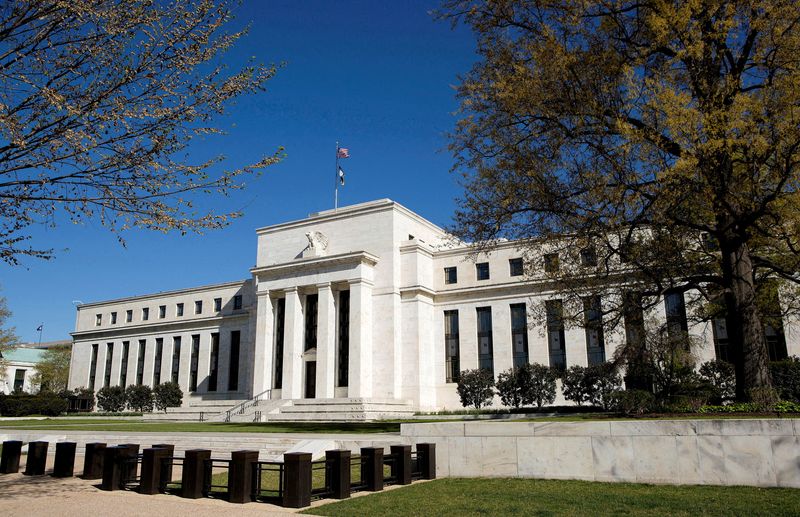Interest rates start to fall in Europe as the Fed lags
2024.05.09 09:04

By Harry Robertson and Naomi Rovnick
LONDON (Reuters) – Global central banks that moved together to battle inflation are starting to scatter, with European rate setters turning dovish while the U.S. Federal Reserve stays cautious about cutting too soon.
Following the most aggressive global monetary tightening cycle in decades, here’s where leading central banks stand and what they are expected to do next.
1/ SWITZERLAND
The Swiss National Bank cut rates by 25 bps to 1.50% in a surprise move in March, leaving the Swiss franc trailing the dollar and the euro as traders bet on another cut in June.
Swiss inflation ticked up to 1.4% in April, but stayed within the SNB’s target an 11th consecutive month.
2/ SWEDEN
Sweden’s Riksbank lowered benchmark borrowing rates to 3.75% from 4% on Wednesday and said it would cut further if inflation stayed moderate.
Consumer price increases have slowed to just over the 2% target as the Swedish economy stumbled under the pressure of high rates. The Riksbank’s next dilemma is the weak crown and the potential for higher import costs to re-stoke inflation.
3/ EURO ZONE
The European Central Bank is widely expected to lower rates in June, with inflation close to its 2% target and growth tepid. Markets anticipate almost three cuts this year.
The big question is how far the ECB can diverge from the Fed. Policymakers might worry that sticky U.S. inflation is a harbinger of things to come across developed economies.
4/ CANADA
3rd party Ad. Not an offer or recommendation by Investing.com. See disclosure here or
remove ads
.
Canadian inflation ticked up to 2.9% in March and population growth is boosting the economy, yet optimism from Bank of Canada governor Tiff Macklem about price pressures moderating has bolstered rate cut bets.
Traders see a roughly 60% chance of a June cut and fully expect lower borrowing costs by July.
5/ BRITAIN
The Bank of England held interest rates at a 16-year high of 5.25% on Thursday, but Governor Andrew Bailey said he was “optimistic things are moving in the right direction” and a deputy governor voted for a cut.
Bailey said the BoE still needs to see more evidence that inflation – running at 3.2% in March – will stay low before cutting rates. Markets expect the first reduction in August.
6/ UNITED STATES
The Fed has kept rates in the 5.25% to 5.5% range since July 2023. It held rates steady on May 1 and soothed some fears, following hot inflation readings, that its next move would be another hike.
Wall Street’s share index, which tumbled around 4% in April, has recouped much of that loss as some Fed officials reaffirmed rate cuts were coming, eventually..
Traders, who back in January had expected up to 150 bps of Fed cuts this year, now price in just over 40 bps worth. A first rate reduction is priced in for September.
7/ NEW ZEALAND
Inflation in New Zealand, at 4%, is likely to stay above the Reserve Bank of New Zealand’s 1%-3% target as migration raises domestic demand, the Organisation for Economic Co-operation and Development said this week.
3rd party Ad. Not an offer or recommendation by Investing.com. See disclosure here or
remove ads
.
Investors don’t expect rate cuts until October or November.
8/ AUSTRALIA
The Reserve Bank of Australia held rates at a 12-year high of 4.35% on Tuesday. It is not expected to lower borrowing costs this year as it forecasts higher inflation and the government primes households for tax giveaways from July.
Futures markets price a 20% chance of a hike in August.
9/ NORWAY
Norway’s central bank turned more hawkish on May 3, when it held rates at 4.50% and warned they may stay there for “longer than previously thought.”
That stance is because of a robust economy and core inflation, last reported at 4.5%, far exceeding its 2% target.
The Norges Bank had eyed a September cut but most economists now expect no move before December or even next year.
10/ JAPAN
The Bank of Japan is the outlier, raising rates out of negative territory in March in its first hike in 17 years.
The move did little to close the yawning gap between Japanese and American borrowing costs, however, driving the yen to fresh 34-year lows and prompting government intervention to boost the currency.
BOJ Governor Kazuo Ueda stepped up the hawkish rhetoric this week, saying the central bank could take action if the weak yen pushes up inflation.








